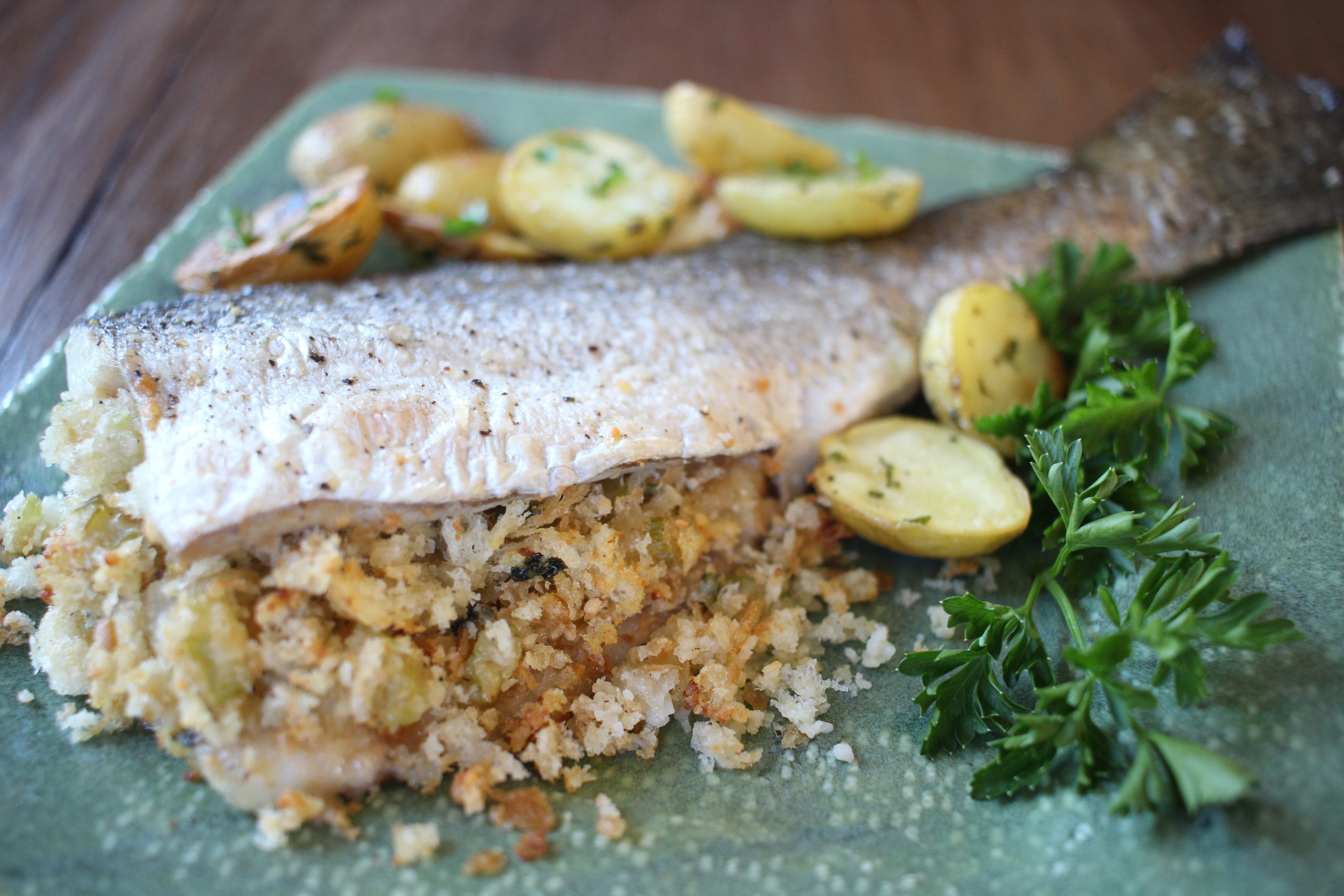The Story of Ricky Moore: The “Best Chef in the Triangle” Talks Carolina Cooking
“I began to see that southern food is not lesser cuisine, and I shed many of the insecurities I had held about my own food culture.”
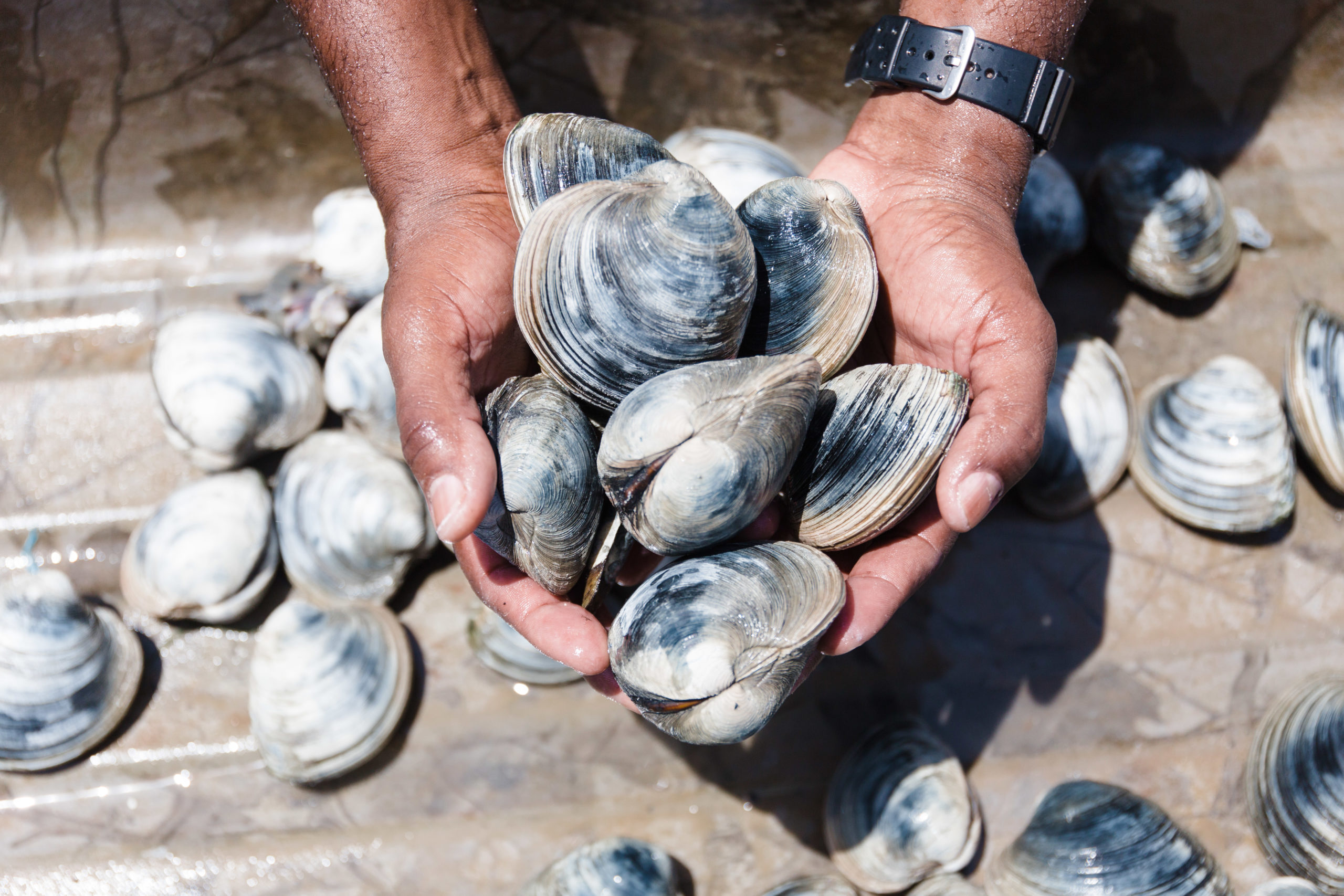
“When I opened up Saltbox, I wasn’t trying to be trendy,” says Ricky Moore.
His small walk-up counter, Saltbox Seafood Joint, quickly has become recognized as one of the top places to get fresh seafood in the Triangle. Moore has gained local and national acclaim for his use of North Carolina seafood and traditional recipes — but with modern twists.
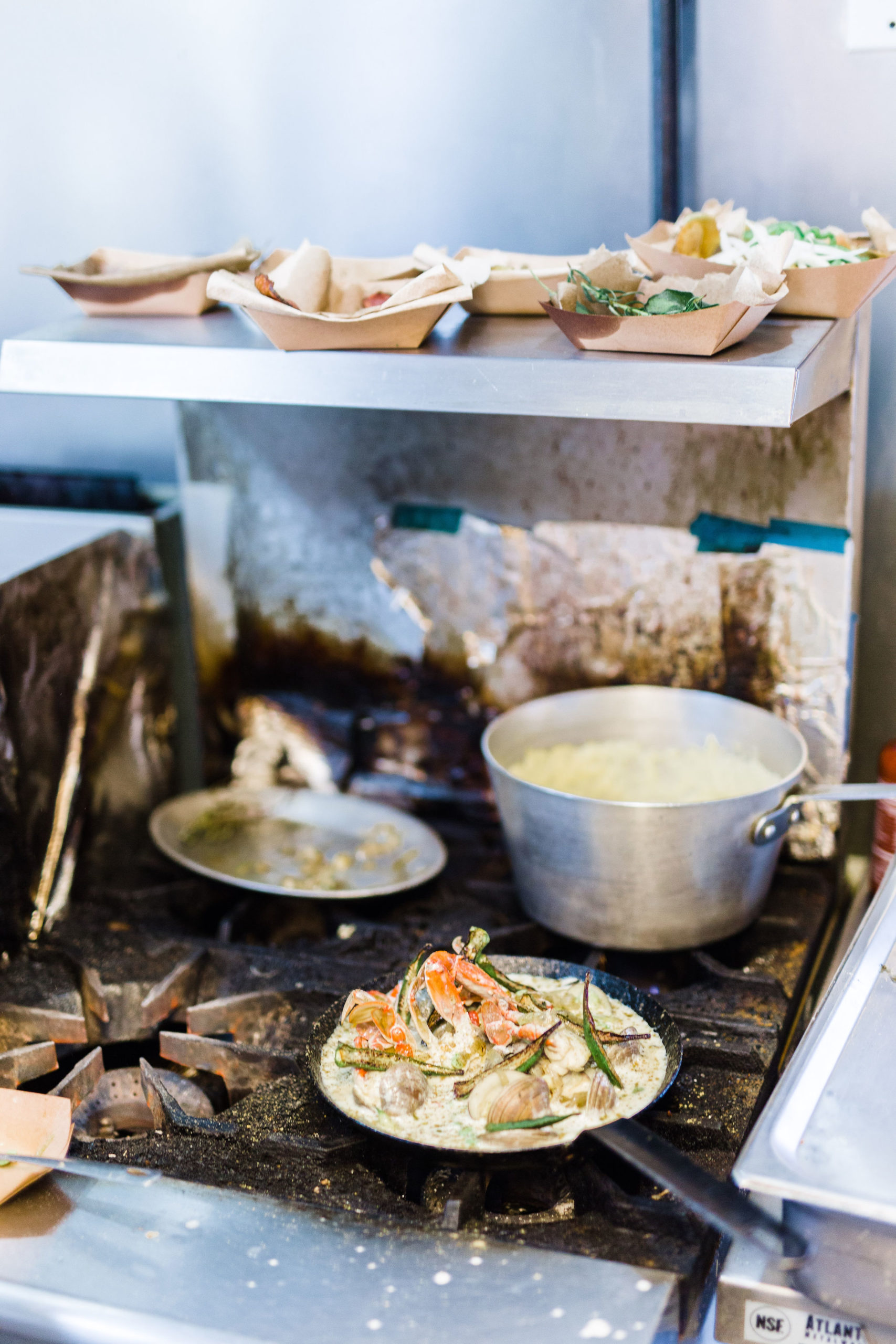
Raised in New Bern, Moore thrives on local flavors that he now brings to his customers. “I grew up eating seafood,” he says. “I felt like if I was going to do a seafood concept, and in the context that I wanted to do it, I didn’t want it to be in a fine-dining setting.”
His food, served on trays and in paper baskets, is reminiscent of a fish-fry or road-side stand — and that’s how he wants it.
“It’s an everyday thing for these fishermen to get fish and provide this food,” he says. “I want to make it an everyday occasion to eat their food.”
Saltbox highlights the bounty of the North Carolina coast, cuisine that customers traditionally have found difficult to enjoy inland.
“Seeing that we have all of this coastline and all of these wonderful natural resources, why are they not showcased on menus?” Moore says, adding that he draws inspiration from his time in France, where globally-known recipes, like bouillabaisse, rely on locally caught seafood.
He spotlights North Carolina’s catch, even when the species are not as well-known as some frequently appearing on menus. “Flounder, shrimp, and oyster,” he says of common public perceptions and options. “Done. That is seafood.”
But by including other N.C. species on his menu — like triggerfish, mullet, or sheepshead — Moore is changing the narrative around local seafood.
“I want to diminish the terminology and reputation of ‘trash fish,’” Moore says. “Just because it isn’t mainstream doesn’t make it lesser.”
To him, “native fish” is the more appropriate term.
“I understood and knew that it was going to take time to inspire and influence people to try some different things,” Moore says. “I have a standard menu, but also a try-me kind of dish, which is literally, ‘Try this fish!’”
His small, personable locations allow more interaction with consumers, including opportunities to answer their questions about unfamiliar species and seasonality.
In response, IndyWeek readers named Moore “Best Chef in the Triangle” last June.
And what are the best chef’s personal favorites?
“I grew up eating bonefish, like croaker, spot, and star butterfish,” he says, adding that one of his beloved preparations is “fried hard.” This eastern-North Carolina cooking style includes a whole or butterflied fish, seasoned in cornmeal batter and fried in a cast iron skillet, bones and all.
“When you fry it so crispy,” he says, “it almost becomes like bacon.”
To bring coastal Carolina cooking to the broader public, Moore recently published the Saltbox Seafood Joint Cookbook.
Written with K.C. Hysmith, the book explains the basics of preparing seafood and how to make classic North Carolina recipes.
In these excerpts from Saltbox Seafood Joint Cookbook, Moore discusses North Carolina’s foodways and how they have shaped his career.
— Danielle Costantini
Growing Up in New Bern
Local seafood is my gospel and always has been. My mother’s side of the family came from a community called Riverdale, situated between New Bern and Havelock. My father was from Harlowe, halfway between Beaufort and New Bern. You crossed waters whichever way you went.
I grew up along the Neuse and Trent Rivers and spent plenty of my childhood fishing those waters, but I don’t want this to sound as though we were eating fish all the time. We ate it whenever we could get it, whenever it was available, or whenever somebody went out fishing. This was real life, so we ate standard eastern North Carolina stuff, too, like greens with white cornmeal dumplings and salted pig tails, collard sandwiches, tender flat biscuits, fried chicken, and iceberg lettuce covered with thick salad dressing. It was never all fish.
A lot of people in my area didn’t have traditional families or upbringings where the mother or grandmother stayed home and cooked everything from scratch. They had jobs, too. My mother worked at the local hospital for a long time. She was incredibly busy, but when she had time to cook she always did it in a very organized way. At no point in her process was the kitchen ever a mess. She kept things clean and neat, and made things like “priddy fried chicken,” clean fried fish, and meatloaf with a tight and tidy ketchup glaze on top. My maternal grandmother, Bernice, worked in a Havelock school cafeteria and would bring home all sorts of extras from work. Hot, scratch-made dishes like lasagna, chicken tetrazzini, yeast rolls, and hamburger steak and gravy. Bernice had a close companion named James — we called him Tick — who learned to cook when he was stationed at Cherry Point. He was a kind of grandfather figure to me (and later married my grandmother Bernice) and was always cooking good food. Tick was known for his big breakfasts. They weren’t anything fancy — standard eggs and potatoes, fresh sausage, boiled and pan-fried ham, and bacon with a thick rind on it — but they were always done with precision.
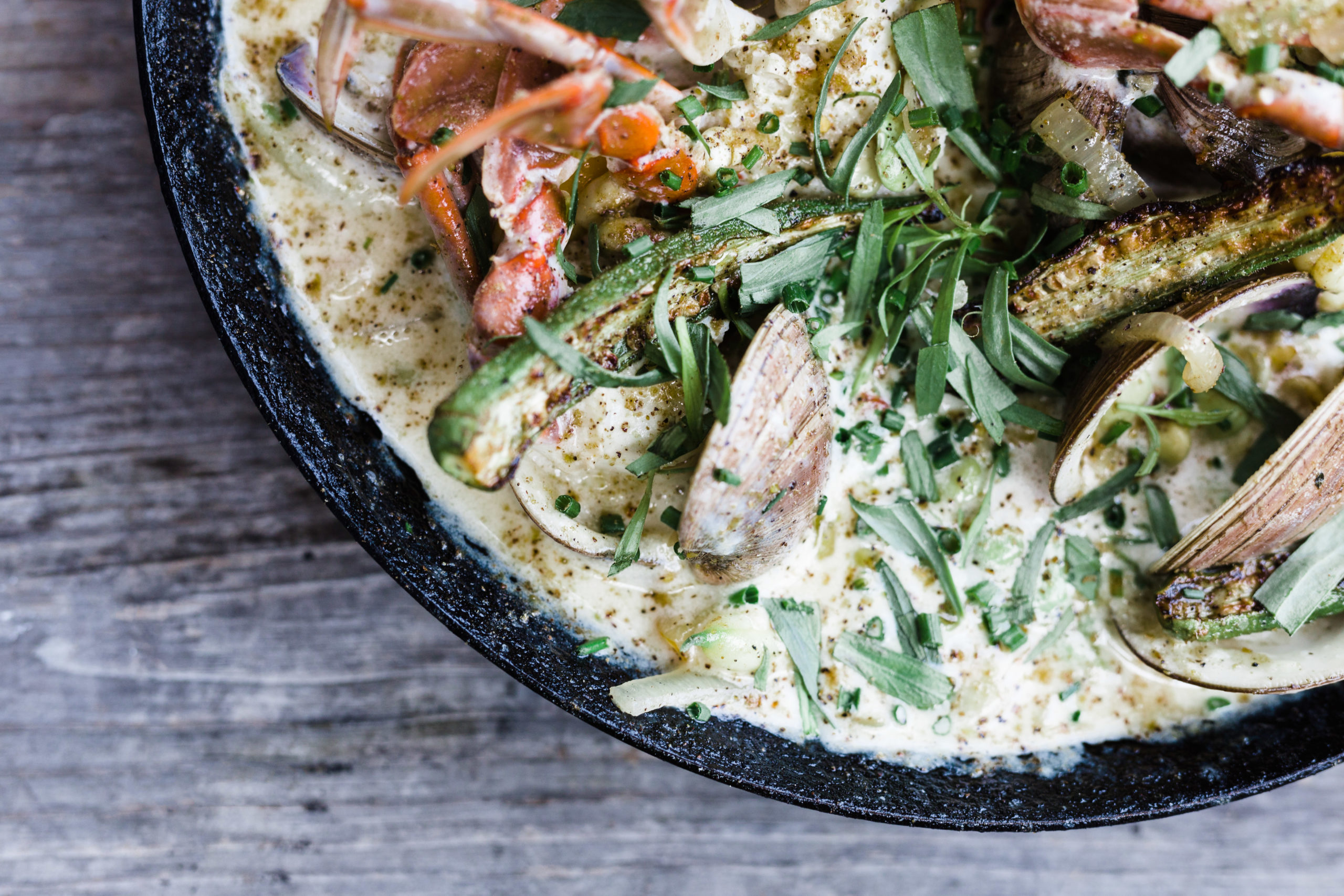
Food and work were always tied up together. In the summertime, when we wanted some pocket money, all of us kids would get on our bikes and ride across the Bridgeton Bridge to go pick blueberries at Morris Blueberry Farm. The earlier you got there, the sooner you could finish before it got too hot. The farm paid in crisp, clean dollars that stuck together when you first got them.
My first official job was in a barbershop where I ran errands, shined shoes, and swept up the hair from the floor. My aunt got me the job. Down the street from the shop, a lady would cook food and sell plates heaped high with fried chicken, roast beef, chitlins, barbecue ribs, macaroni and cheese, collards, corn pudding, and such. I took orders, ran to collect the plates, and brought them back to the barbershop. At the end of the day, I spent the tips on a plate just for myself. Later, I ran a paper route, but I spent all my money on candy, so my mother made me quit. In high school, I worked at the Piggly Wiggly as a bagger, cashier, and produce stocker. Then I took another job as a dishwasher at a local seafood restaurant called “Friday’s 1890.” They never made the kind of fish you ate at home; instead, they made popcorn shrimp, fried flounder, hushpuppies, all the normal sides, and classic North Carolina pulled pork barbecue. A lot of restaurants did pork and seafood, like an eastern North Carolina surf and turf, and served it all on the same plate. I’ve always wondered why barbecue took the lead.
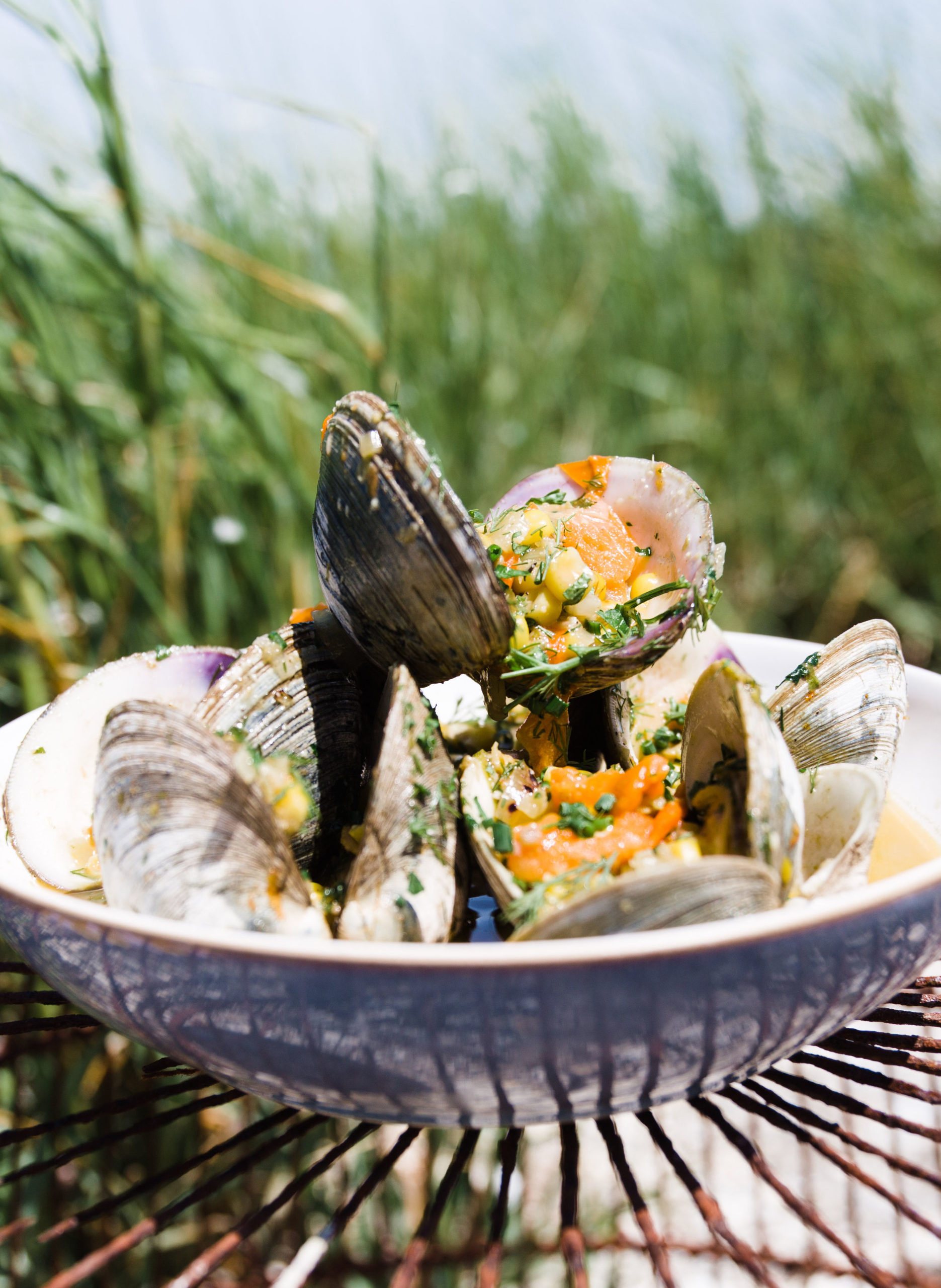
Life was busy, and everybody had work to do, so we didn’t always gather at the table together to eat, but the food we had was always nurturing. Whatever I was fed, whichever friend or family made it, it was good to me. And, thankfully, we still found time for fishing.
During the summer all the cousins would gather at my other grandmother Lottie Mae’s house. Once a week or so we’d set off on very informal fishing excursions with bamboo fishing poles fitted with standard bits of bait. Whenever you did go fishing, everybody caught enough for everybody — at least, that was the plan anyways. We’d haul our catch home for our aunts and grandmother to do the extra-messy job of scaling, gutting, and cleaning. They never trusted us kids to do it. When we couldn’t make it out to the water, there was a gentleman who drove around selling freshly caught fish in his pickup truck that he had outfitted with a wood and galvanized tin storage setup and a big metal scale. All the fish was stored on ice — it seemed so special. You made your selection and he would weigh it out and wrap it up for you to take back into the house. Fish was either fried or stewed, depending on the size of the catch, and always very simply prepared. It was served with boiled potatoes or other some vegetable. Everybody, even us kids, ate the same thing.
Launching a Career
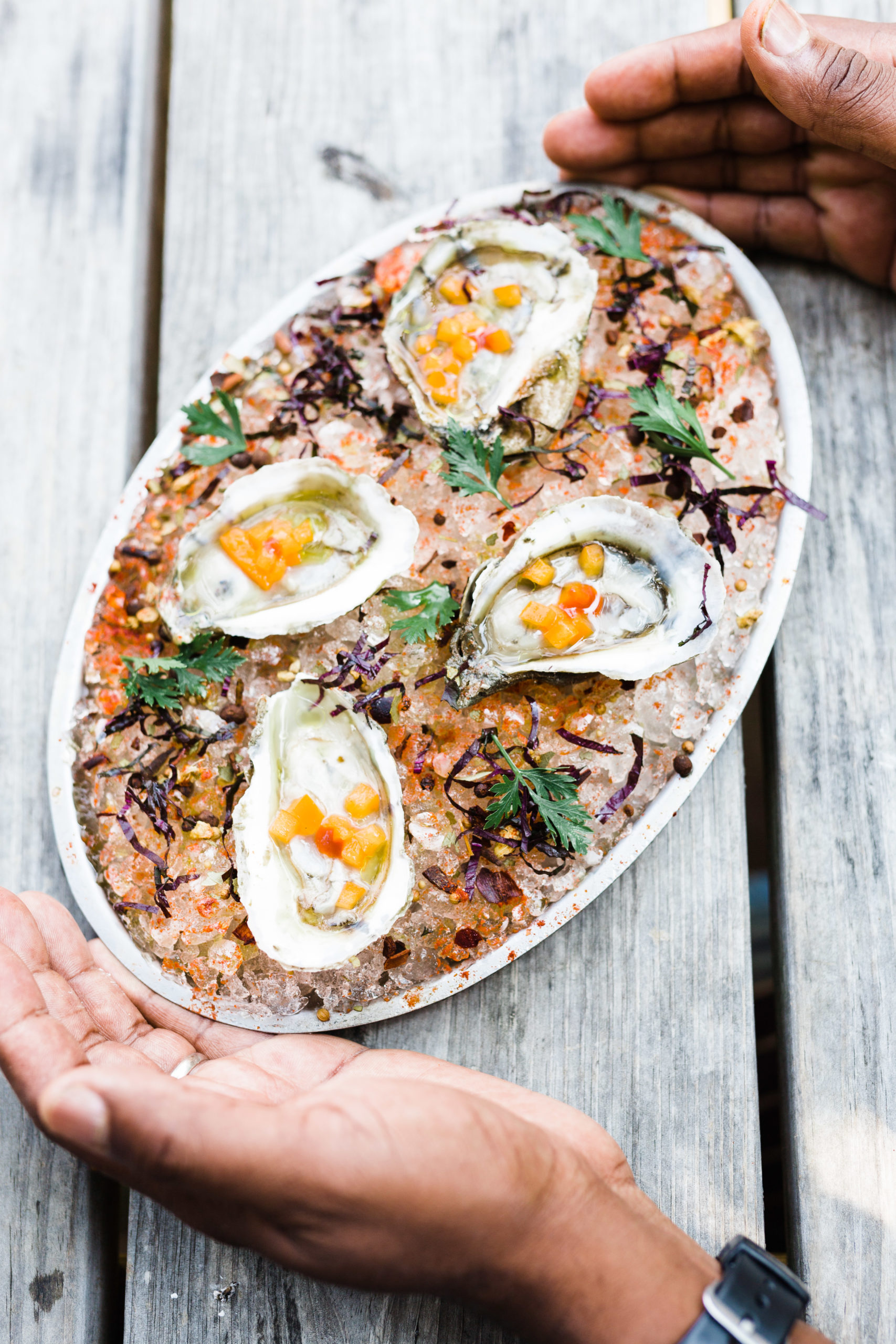
It was part of my personal practice to further my culinary education and experience by working abroad whenever I had the opportunity. I wanted to work in specific restaurants just to define for myself what, exactly, a Michelin-starred kitchen was and what made it so special. Through this work abroad, I found a shared sense of tradition, culture, behavior, and, most important, discipline when it came to food and dining.
I was the only person of color in these European kitchens, which made me even more intense about learning as much as possible. Back then, the only African American chef I knew of was Patrick Clark, who ran famous restaurants like Odeon and Tavern on the Green and was on Iron Chef back before the show was big in the United States. Being black automatically pigeonholed you. By focusing on the classical cuisines of France and Italy, Clark was never perceived as a typical African American chef. Not wanting to be recognized as just a southern cook, I thought that I should follow a similar path.
After some time and additional stages in European restaurants, I realized that the rustic roots of these culinary mainstays weren’t that different from the food of my childhood. I began to see that southern food is not a lesser cuisine, and I shed many of the insecurities I had held about my own food culture. It was time to head back to the States.
Doing One Thing Really Well
I wanted a little shop, to do one thing really well, and to control every aspect of it. This was ultimately the base of my business model…during my search and was my first thought when I finally found a small building, a little walkup with the right bones, that wouldn’t require a lot of staff and would allow me to be in a place where I was there every day doing it all myself. A place where I wanted to be all the time. Seafood just made sense.
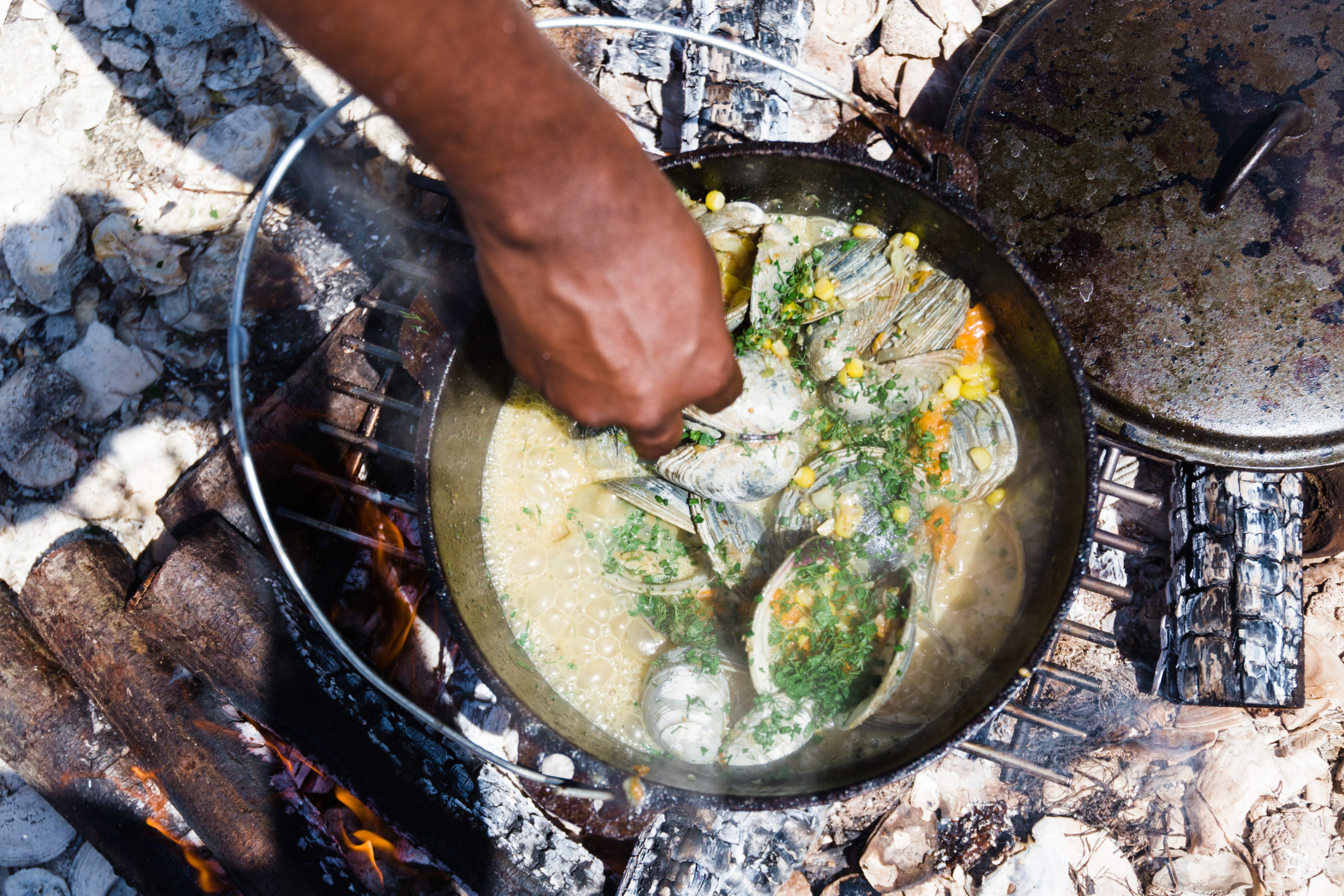
Unfortunately, this little shop was not for rent and was occupied by a burger and hot dog joint, so I decided to observe this operation’s routine. For about a week, I went there in the morning, at noontime, and late at night. I observed the traffic patterns, the local activities, the types of customers on foot and in cars, and the neighborhood vibe. I also watched the business. The owners weren’t working the place as I thought they should have been. They were always late, glued to the loud television in the restaurant kitchen, and seemed to have no interest in serving food. So, I thought I would ask them, “You must be tired of this?”
They were a little offended.
I talked to the building’s owner, an elderly lady whose family had owned the place for a long time, and I told her about what I wanted to do and what the place could be. Thankfully, the timing was right, the old business left, we drew up a new lease, and I found myself with a small restaurant without bells and whistles and in need of a thorough cleaning and complete reorganization.
Then came the naysayers. “You going to go to that little building over there?” “We’ve seen so many different things in there… ” “You’re coming in here with seafood, okay… you’ll be gone in three months.” But they were all missing the boat. I had driven around this neighborhood and seen firsthand the changes that were coming. I knew, five years from now, this would be a success. I could get it done. This was a practical opportunity to go into business for myself, do something creative and thoughtful, without big loans or investors. I could work this little thing.
Soon the questions changed. “Where did you find this space? It’s so cool!” Seeing the success, the people who ran the burger stand before me even came back and wanted to take over my lease. People were really excited about what I was doing, and it seemed as if every chef in Durham came by to eat. As a chef, I feel that I know what chefs like: goodness, simple goodness, and to taste the care in what we’re eating.
My original plan was to have a food truck (it was all the rage at the time). Instead, I got a stationary concession stand with two small fryers and a four-burner range. I was cooking everything to order. And I found I could do everything I wanted all for myself. I had Saltbox.

For me, Saltbox means hometown, and I kept this in mind as I created the menu. I wanted to bring that hometown food forward. I did my research and asked, “What was your hometown food in Durham?” The default answer was always pulled pork. Growing up in New Bern, it was fried hard crabs or fried chicken from Melvin’s Chicken Shack, where they cooked chicken to order and you’d wait a while but never complain. In Chapel Hill there was the Rathskeller, where you could get the best spaghetti dinner, and Hector’s, which was known far and wide for its wraps before wraps were cool. I wanted Saltbox to be a place like this, a place folks would consider part of their hometown and the fabric of the community. A place that would make folks say, “You ain’t been to Durham if you haven’t been to Saltbox.” I opened the doors in October 2012, just in time for the first fish running of the fall.
Four years on, after staying steady, preaching the gospel about local seafood, and having confidence in my work, I decided to expand. As I drove back and forth between my home in Chapel Hill and my work in Durham, I kept passing the old Shrimp Boat restaurant. I thought, “If this space ever comes available, it would be ideal for a sit-down Saltbox.” Through word of mouth, I found out that the Shrimp Boat’s owners wanted to leave, so I jumped. Norma and I went through the bank process, cleaned up the space together, and turned the restaurant into a seamless second version of Saltbox. We painted the bricks the signature Saltbox colors that always remind me of the beach: the light green of seagrass, the orange of life preservers and fishermen’s jumpsuits, and a light blue to represent North Carolina. Everything needed to be authentic. For inspiration, I visited the Core Sound Waterfowl Museum on Harkers Island, noting all the natural wood and the purposeful lack of mermaids, pirates, and anchors.
Locals Seafood sent over cleaned oyster shells that we spread under the picnic tables situated beneath our giant vintage 1969 marquee. The marquee is how I communicate with my customers, building a space of awareness about local seafood and letting folks know what fish is in season. Although I use social media, I like this old-fashioned version, too. I’ll spell out “Croaker Season” or “Butterfish is here” and watch as the cars pull in with curiosity. As a final touch, two vintage boat clocks hang over the door, so customers and cooks can see the time and understand the importance of how this process of slow, local food works.

Saltbox quickly became a platform for me to advocate for good cooking, evangelize local North Carolina seafood, and give back to the community. It’s important to give back and give back genuinely, not just because you’re supposed to, but because you are connected to it all.
I’ve had the great fortune to partner with many meaningful events from fundraising dinners for homeless organizations to working with Durham Independent School District kitchen managers to create recipes for school cafeteria menus. Recent events I have held with Adrian Lindsay and the Green Book Supper Club, a pop-up dinner series showcasing African American chefs in North Carolina, have even inspired much of the historic and cultural research for this cookbook. The Green Book was an annual guidebook for African Americans during the Jim Crow era that pointed out shops, hotels, and restaurants that were friendly to the black community. Back then there were two places in Durham where you could stop and grab a bite to eat. Ultimately these places were a way to bring folks together.
Change seems to happen if you put good food in front of people.
• From Saltbox Seafood Joint Cookbook by Ricky Moore. © 2019 Ricky Moore. Used by permission of the University of North Carolina Press, www.uncpress.org.
• Order the cookbook here: go.ncsu.edu/Saltbox
• Watch The Hook, Ricky Moore’s new television show with UNC-TV: go.ncsu.edu/Ricky-TV
- Categories:

